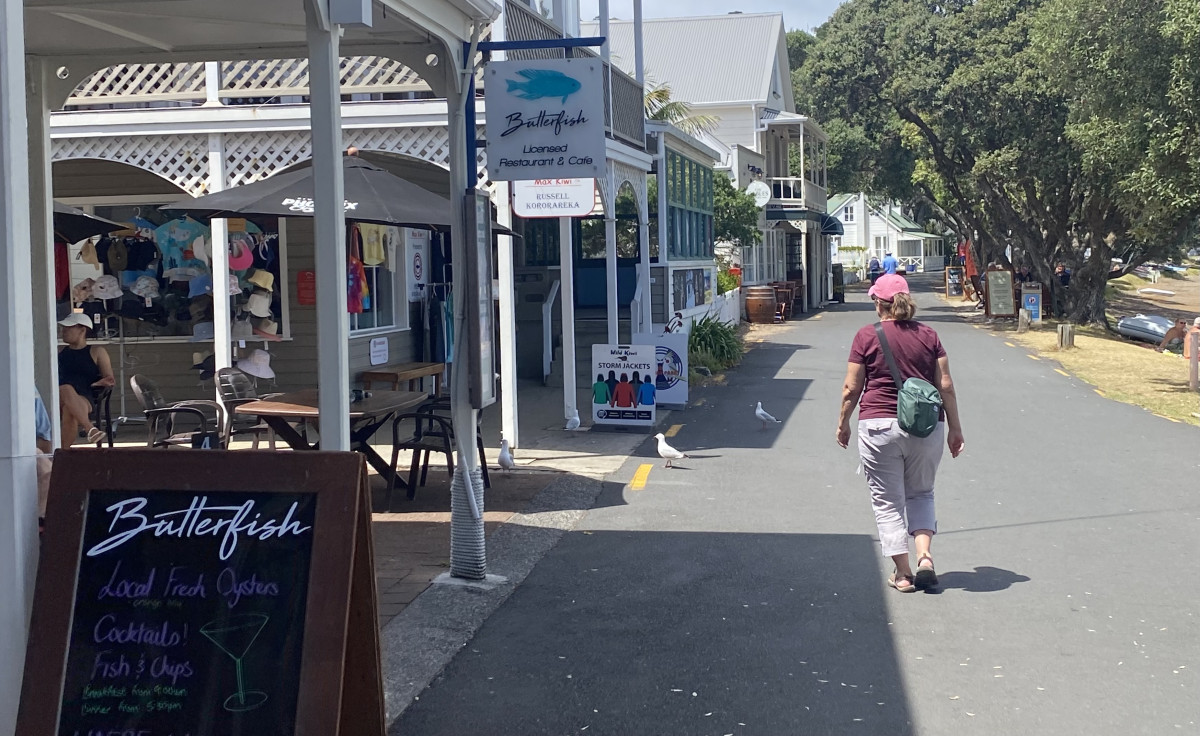Russell
After Cape Reinga, it was time to explore the Paihia area. The closest and most obvious destination was Russell, the “hell-hole of the Pacific”.

Apparently, Russell came by that name honestly. Before Captain Cook arrived in 1769, the small beach area, across the harbour from Paihia, was a thriving Māori settlement called Kororāreka. In the 1800’s, it became a popular port, offering a safe anchorage, and a place for sailors, whalers and traders to rest and recover. That, of course, led to deserting seaman, ale houses, including New Zealand’s first tavern – the Duke of Marlborough – and prostitution.
This is the information we found in a wonderful little museum in Russell. https://www.russellmuseum.org.nz/
A scant few dollars to get in, the museum holds information from pre-colonial days, through the discovery and colonization by Europeans, as well as the local flora and fauna, and even a 1/5 scale replica of Captain Cook’s ship Endeavour.


While we didn’t go looking for an ale house, we did find a nice little Italian diner for lunch, explored the historical church, then took the ferry back to Paihia.
Tane Mahuta
Cathedral Grove on Vancouver Island boasts about Douglas Fir trees with 9-meter circumferences that are about 800 years old.
What would you think about trees that are more than twice that age, have a circumference of over 13-meters and are 51.5 meters tall? The only word I can come up with is “Wow”. And, that describes Tane Mahuta, the tree my thesis supervisor, a botanist, calls her favorite tree in the world.

While it was a mundane drive to get to the tree, and it was a grey and damp day, the tree itself was worth it. Unfortunately, in the grey light, our pictures don’t do the tree justice.
However, the day cleared as we drove back to Paihia and was once again spectacular as we made our next stop.
Waitangi
February 6 is Waitangi Day. Waitangi Day is the day New Zealand marks the signing of the treaty of Waitangi, the treaty that was brokered between the Maori and the British and is considered to be New Zealand’s founding document.
The Waitangi Treaty Grounds – https://www.waitangi.org.nz – which gave name to the document, is also on Paihia bay, and, unexpectedly to us, holds a wonderful museum about the founding of New Zealand.
While we were in New Zealand for Waitangi Day, we were in another part of the North Island, and didn’t understand the significance of the day.
The museum starts with a very dramatic entrance that provides the perspectives of the Maori people on the left side and the perspectives of the British and French colonizers on the right. This juxtaposition provides very different and interesting points of view of similar events. Further on in the museum, there is one of the last remaining copies of the original document and the history of how multiple copies were taken around the islands for the various Maori Chiefs to sign.





Of course, no founding document is without controversy, and the Treaty of Waitangi is no exception. Apparently, identical copies were written in English and Maori. However, in reality, the translation from English to Mouri has small, but important, changes to the rights of both parties, and the English document gives priorities to the Crown that are not part of the Maori translation.
Over time, this led to additional wars and, even today, debate and disagreement about Aboriginal rights.
The Waitangi grounds also includes the original governor’s house, the world’s largest waka (war canoe) made from three Tane Mahuta trees, a Maori cultural experience, and the Rau Aroha Museum of the Price of Citizenship, talking about the Maori wars, and New Zealand’s participation in WWI and WWII.
And, with that, our time was up in Paihia, so we were off again to Auckland for our train trip to Wellington.
